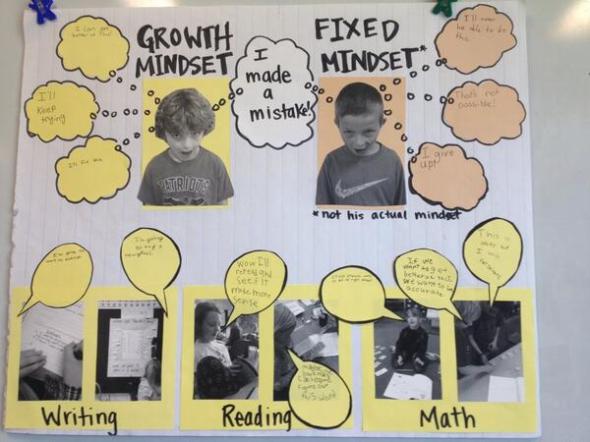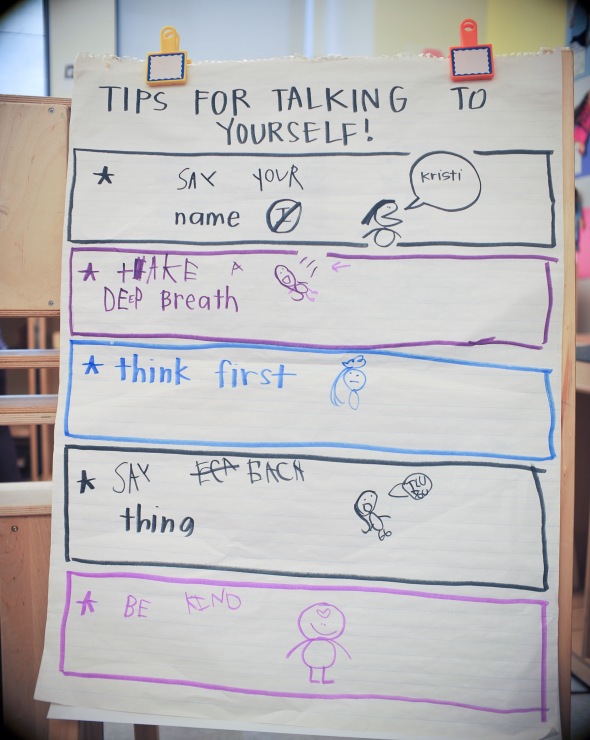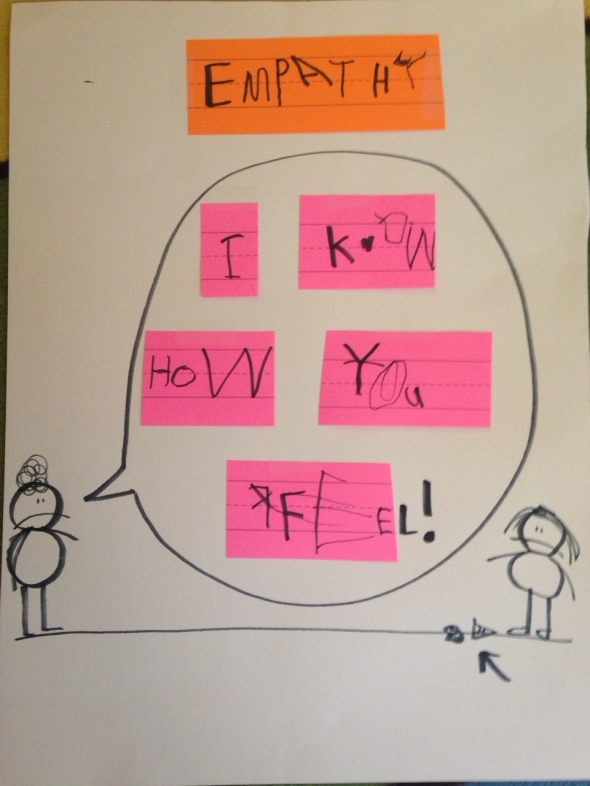Getting To The Chart of The Matter
Posted: October 18, 2015 Filed under: Uncategorized | Tags: flexibility, mindset, persistence, resilience, self-control, self-talk 2 Comments(Can’t stop, won’t stop making chart puns!)
Ahhh, October. For some this means country walks and apple cider, for others Halloween decorations and sweets galore, but for teachers, October means that school is really in session. Routines are getting tighter, shyness is dissipating and we are finally getting to know the little (and big) ones that we will spend the next year with in close quarters.
Once the very beginning weeks of school are past, it can be easy to put our sights on November’s reading benchmarks, and parent teacher conferences, and math assessments and on and on and on, and lose sight of what really matters: teaching and coaching into being a resilient and joyful kiddo, who looks at reasonable risks and says “I’ll try” and rebounds from disappointments and failures with his or her spirit intact. As a matter of fact, the New York Times just had an article about the critical need for schools to teach into social skills and positive habits of mind (Why What You Learned in Preschool is Crucial at Work). But how? When? With what?
A Mindset for Learning (and Living)
Kristi (of this blog) and Christine Hertz recently published a book on this very topic, A Mindset for Learning (available here or here) Essentially they argue that it isn’t about adding a new curriculum to your already full day, but rather rethinking the curriculum you already have in ways that support flexibility, resilience, optimism, empathy, and persistence. It is not about doing some more, it is about doing something differently.
Through storytelling, reflection, goal setting, read alouds, and self-talk, we can help children learn to be all of those things so that they have a lifetime of positive and powerful experiences, while at the same time helping children meet benchmarks and standards.
But What Does This Have to Do with Charts?
Charts are the footprints of teaching, and all charts gear towards growth mindsets because they say, “Look, here is a way to do this tricky thing.” They aid in flexibility and persistence, and they foster independence. Yet, we can also chart habits of mind to help children develop the pro-social skills necessary for learning and life.
Charts Show Us Choices:
The chart above comes courtesy of Christine Hertz, co-author of A Mindset For Learning, as a way to teach her third graders that there are different ways to think about things in the world. This launched an inquiry into things like flexibility and optimism, but also provided a touchstone chart for children to reflect on their own thinking. The chart, made collaboratively over several days, became a way to become metacognitive about the ways our thinking can help, or hurt, our learning and living.
Charts Provide Strategies:
In Kristi’s kindergarten classroom, there were lots of discussions around the facts that brains, like bodies can grow. The children in our classrooms are moment by moment developing the ways they will think about themselves and the world, and so it is imperative that we, as teachers, use the best possible language about children, and teach children to do the same for themselves. Instead of using an end of workshop share (in this case play workshop, though it could be any workshop) to teach more content, Kristi used it to teach into self-talk. No matter how beautiful your instruction, if a child says to his or herself “I can’t do this, it is too hard” that child will not have access to learning. We cannot ignore that the way we think about ourselves affects the way we learn and live.
Charts Provide Power and Agency:
Part of having a mindset for learning as a teacher is understanding that pro-social skills don’t just magically appear, they are actively taught and reinforced by us and others. We would never dream to say to a child “go multiply” if we have evidence they don’t know what that means. The same is true for things like flexibility and optimism, or in this case―self- control. Self-control is not about compliance, it is about being in charge of your own body, and understanding your own ability to deal with feelings that may be overwhelming or intense. Having control over your own body can make you feel powerful and competent, and it is essential that we teach ways to do that. This chart, constructed over a week, presents different ways to gain control over your body when it feels like you can’t. Note the option for a run―we don’t all need quiet to regain control―for some children a sprint down the hallway is all they need to come back to a place of control.
Charts Provide A Vision for a Better World:
In the book, A Mindset for Learning, Christine and Kristi lay out possible ways to build an understanding of pro-social stances, one of which is empathy. This chart was the result of an inquiry around Leonardo the Terrible Monster by Mo Willems and the idea that empathy is knowing how someone feels, and using that to change your actions if you need to. This phrase, “I know how you feel!” hangs in the area of the room where children go to talk about problems. As children talk out issues that arise, they use it to make connections to each other, and to think about what changes might need to be made to make the community run smoother, and relationships more fair.
In Summation…
We chart what we teach, so as you look around the room, in what way do your charts support children developing pro-social skills and positive habits of mind? In what ways do your charts help children see possibilities for themselves and how they relate to others? The things we spend time on becomes the things that children know matter, and as you begin these conversations you will see things like this:
“DJ Pony. She likes to sing. She is optimistic. She is the DJ”
We can teach in a myriad of ways. Let’s choose the ones that foster children as they develop passionate, productive hearts and minds. For more, please check out A Mindset for Learning (available here or here).
Happy Charting!
Kristi and Marjorie







This was such a wonderful post. I could not agree more. I have been teaching for over 35 years and the kids that end up with wonderful futures are the ones with resiliency and empathy. Social skills matter so much and teachers say, “I don’t have time to teach that!” But it happens throughout the day, each day as we interact with children as well as the planned activities we use to teach these skills. If we want children to excel and have a bright future, every teacher needs to understand the importance of class community and developing all the things you mention. Social skills are the crux of who we are… Responsive classroom is a great resource.
Thank you for sharing this post. I can always find something I need to learn and remember and do and share.